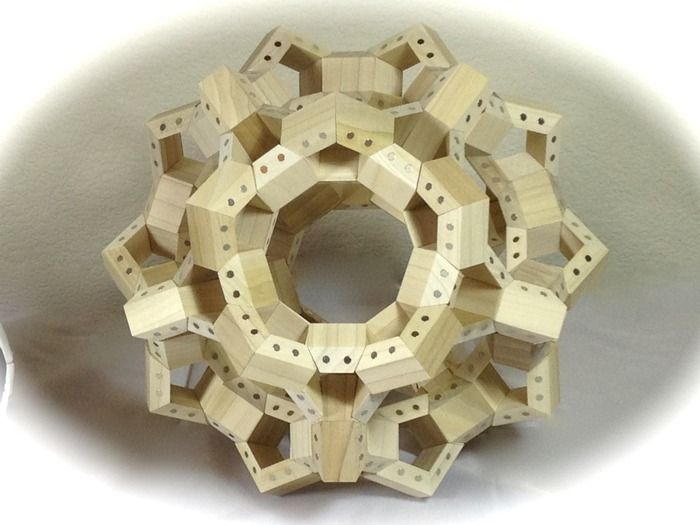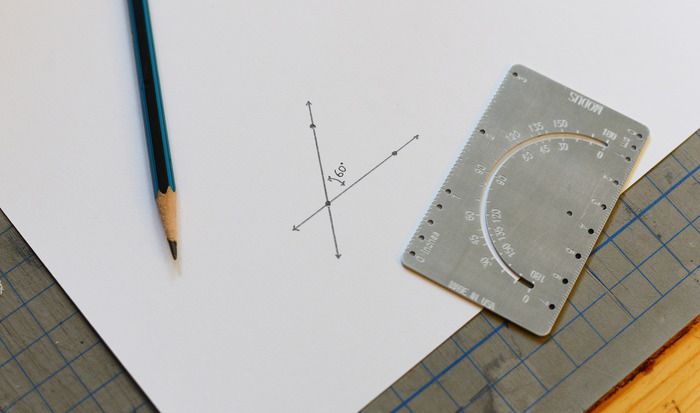Five Wild Ideas: From a Vest for Weight Loss to an Electric Skateboard
Plus, building blocks for children inspired by Archimedes
/https://tf-cmsv2-smithsonianmag-media.s3.amazonaws.com/filer/3f/82/3f822ca3-0984-4d12-a18f-b88dd9c2639c/20150106033952-zboard-carrying-low.jpg)
The average American worker spends 13 hours sitting every day at home and at work. Some plant their feet squarely on the ground underneath their desks, but others sit cross-legged or prop their feet up.
For the latter set, Matt Hulme and Brent Murray, two Brigham Young University students from Provo, Utah, have invented the Foot Hammock. Exactly what it sounds like, the product is a miniature mesh or fleece hammock, intended to improve a user's posture, that attaches, with adhesive hooks, to the bottom of any desk. A Kickstarter campaign for the product, which wrapped five days ago, raised $113, 212, blowing its original $15,000 goal out of the water. Who knew?
Here are five other quirky ideas that were funded this week:
The Cold Shoulder Calorie Burning Vest (Goal: $13,500 Raised: $281,319 on Kickstarter)
In order to stay warm when it’s cold, the body must burn extra calories. This logic is the inspiration behind the Cold Shoulder vest, the latest in unconventional approaches to weight loss. The idea comes from NASA scientist Wayne Hayes, who believes that people can drop pounds, even while sedentary, by wearing a garment lined with ice packs.
Users place the vest in the freezer, and once it’s frozen, take it out to wear anytime. Watching television? Commuting to work? Put it on. Through mild cold exposure, Hayes claims that wearers can burn 500 calories daily, which could amount to a pound of fat per week. He also emphasizes the vest's casual wearability. Luckily, his wife was able to talk him out of wearing it at their wedding.
Zboard: An Advanced Electric Skateboard (Goal: $50,000 Raised: $435,000 on Indiegogo)
Bikes may soon have to make way for the Zboard 2, an electric skateboard that starts, stops and adjusts its speed based on the rider subtly shifting weight. Fans of extreme sports, the Northern California inventors of the product want to offer a fun but reliable mode of transportation for short distances.
The lightweight, waterproof board, equipped with LED lights, charges in 90 minutes and tops out at 20 miles per hour, although speed is at the user’s discretion. There are currently two models available: the Blue, which can traverse 16 miles on a charge, and the Pearl, which can cover 24.
Neeo Remote: Universal remote control (Goal: $50,000 Raised: $1,558,280 on Kickstarter)
A Cupertino, California team of designers and engineers has taken the sci-fi notion of a universal remote and made it a reality. Neeo is a two-piece home automation system, consisting of a remote and a “brain."
The brain—a stationary, oval-shaped device that can be placed anywhere in the house—connects to any infrared and Wi-Fi products in the home, including lighting, window shades, the television and speaker systems. It is compatible with over 10,000 home appliances, such as Nest, Sonos and Apple TV. With the remote, the user is able to control all these devices from one place. Just don't lose it.
Facets: Building Blocks of 3D Geometry (Goal: $12,500 Raised: $36,864 on Kickstarter)

Ron Worley, a Las Vegas toymaker, has a fascination for Archimedean solids. If you need a little geometry refresher, these form when two-dimensional shapes, like triangles, rectangles and pentagons, meet at different edges to create something three-dimensional. And to share his nerdy obsession, he created Facets, a set of magnetized blocks that connect at interesting angles. With a set of these dandy things, kids (and adults!) can move beyond the basic tower and build something more reminiscent of a complex molecular model.
Modus Sketching Tool (Goal: $1,400 Raised: $25,754 on Kickstarter)

Move over, melon baller. Watch out, egg separator. Sayonara, mango slicer. The Modus puts unitaskers to shame. By Shard Designs of Pleasanton, California, the slick, metal tool boasts 11 uses. It fulfills an artist's many needs, serving as a portable ruler, compass, protractor, T-square and more. The size of a credit card, the Modus can easily stowed in a wallet, where it actually protects against RFID theft.
/https://tf-cmsv2-smithsonianmag-media.s3.amazonaws.com/accounts/headshot/profile.jpg)


/https://tf-cmsv2-smithsonianmag-media.s3.amazonaws.com/accounts/headshot/profile.jpg)